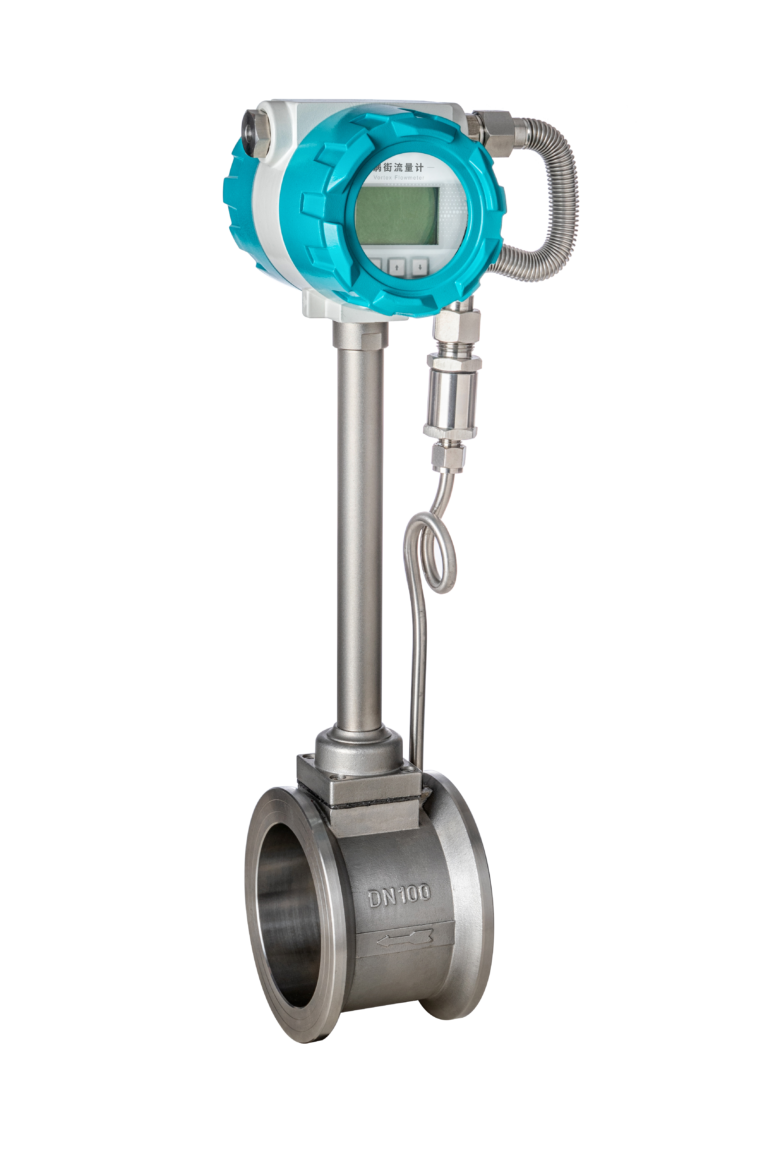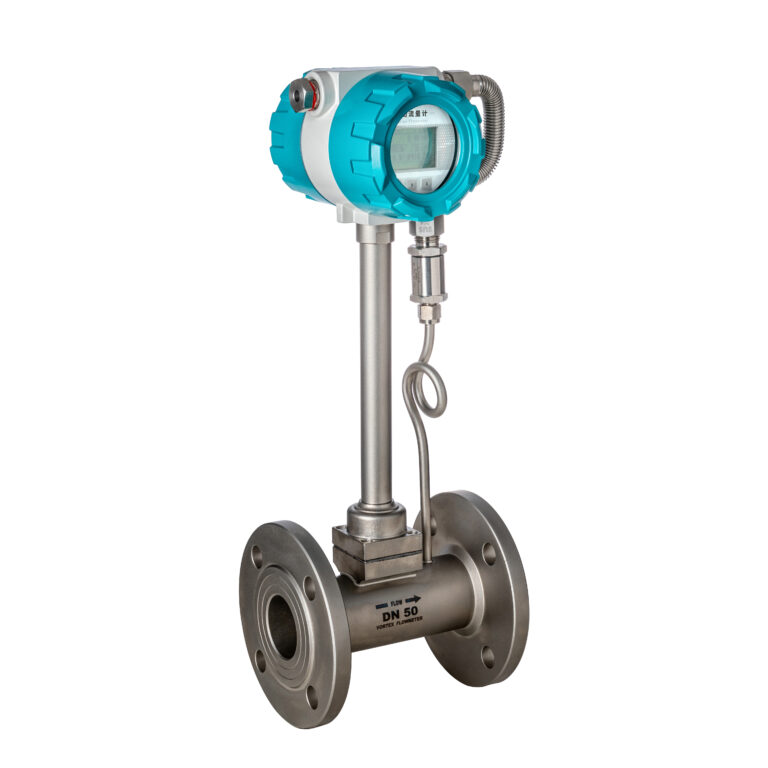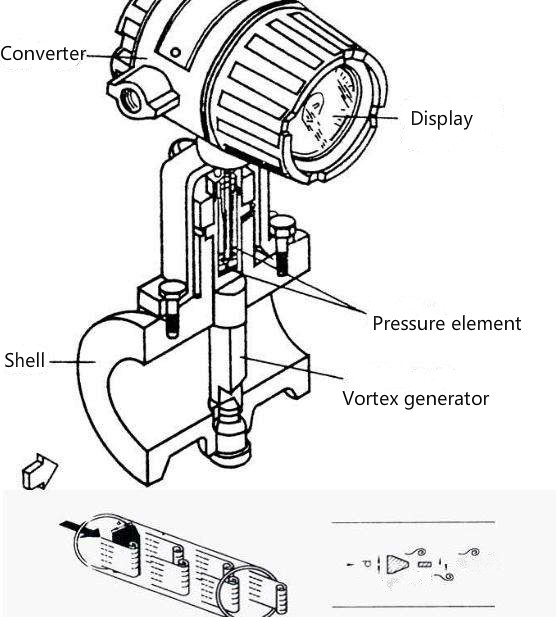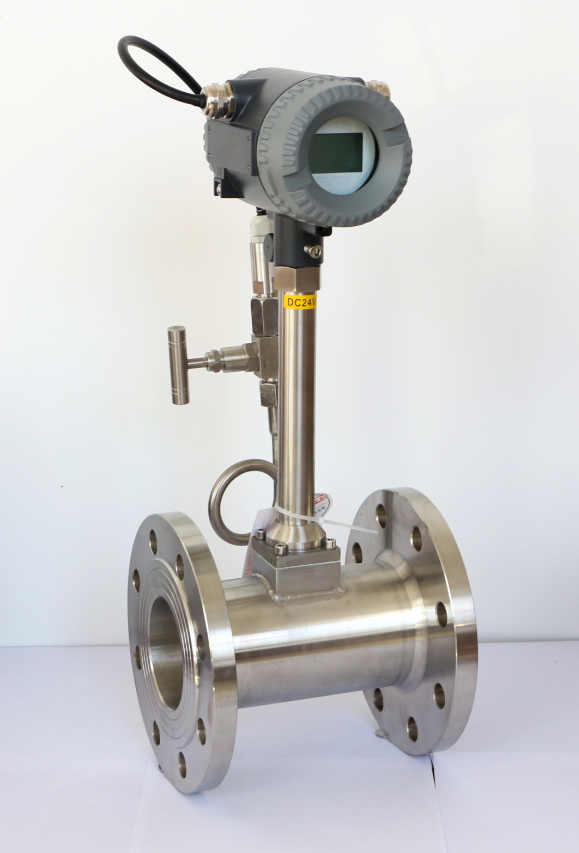1. Installation Location
Importance of Installation Site Selection
The installation location of a vortex flowmeter plays a crucial role in ensuring accurate measurements. The device should be positioned in a part of the system where the airflow is steady and not influenced by turbulence caused by bends, valves, or other obstructions. For optimal performance, the flowmeter should be installed in a section of the pipeline that allows the flow to stabilize both before and after the device.
Minimum Straight Pipe Requirements
It is recommended that the flowmeter be installed with a sufficiently long straight pipe section upstream and downstream. Typically, manufacturers specify the required length of straight pipe, which can range from 10 to 20 times the pipe diameter upstream and 5 to 10 times downstream. This ensures that the airflow is laminar and consistent, preventing inaccuracies caused by swirling or non-uniform velocity profiles.
Avoiding Turbulence
Turbulence caused by elbows, pumps, or other equipment upstream of the flowmeter can lead to measurement errors. Installing flow conditioners or straighteners in the pipe before the flowmeter can help reduce such effects. Ensuring the stability of the flow upstream and downstream can significantly improve the accuracy of the vortex flowmeter.

2. Temperature and Pressure Effects
The Influence of Temperature
Temperature fluctuations can affect the density of the air being measured. Since vortex flowmeters measure flow based on the frequency of vortices shed by a bluff body, variations in air density caused by temperature changes can lead to inaccurate readings. For example, higher temperatures tend to reduce air density, which may result in an underestimation of the actual airflow.
Adjustments for Pressure
Similarly, pressure changes can also alter the air density. An increase in pressure raises the air density, potentially affecting the vortex shedding frequency and the measured flow rate. Therefore, it is critical to monitor and compensate for pressure fluctuations when using a vortex flowmeter in high-pressure environments. The flowmeter should be calibrated to reflect the specific conditions of the system, ensuring that it accounts for the temperature and pressure effects on the flow measurement.
Compensation Techniques
To address the influence of temperature and pressure, modern vortex flowmeters are often equipped with temperature and pressure compensation capabilities. These devices automatically adjust the flow readings based on the measured temperature and pressure, providing more accurate measurements. When compensation features are not available, manual calibration based on the operational conditions must be conducted regularly to maintain accuracy.

3. Vibration and Noise
Impact of Vibration
High-pressure airflow systems are often subject to vibration, which can interfere with the proper functioning of vortex flowmeters. Excessive vibration, either from the pipe system or the surrounding environment, can cause the flowmeter to produce inaccurate readings by disrupting the formation of vortices. In extreme cases, vibrations can lead to signal noise or false vortex signals, resulting in substantial errors in flow rate calculations.
Mitigation Strategies
To minimize the impact of vibration, several strategies can be employed. First, the flowmeter should be mounted in a location where vibration levels are minimal, and any external sources of vibration should be isolated or dampened. Using vibration isolation mounts or installing the flowmeter on a stable section of piping can help reduce the effect of vibration on measurements. In some cases, installing a flexible joint in the pipeline near the flowmeter can absorb the vibration and protect the device from its effects.
Noise Interference
Acoustic noise generated by high-pressure systems can also interfere with the operation of a vortex flowmeter. This is especially true for devices that use piezoelectric sensors to detect vortex shedding, as high levels of noise can mask the signal generated by the vortices. In such cases, ensuring that the environment is as quiet as possible, or employing noise-reducing measures such as acoustic insulation, can improve measurement accuracy.

4. Safety Considerations
Risks of High-Pressure Systems
Measuring high-pressure airflow can pose safety risks to both equipment and personnel. If not properly handled, high-pressure systems can cause damage to the flowmeter or even result in dangerous failures, such as pipeline ruptures or flowmeter damage due to overpressure. These risks highlight the importance of following strict operational procedures when dealing with high-pressure flow measurement.
Operator Safety
Operators must be trained to understand the risks associated with high-pressure airflow measurement and should be familiar with the correct handling and maintenance procedures for vortex flowmeters. Regular safety training is essential, especially in industrial settings where high-pressure systems are common. Operators should always wear appropriate personal protective equipment (PPE) and follow safety guidelines to prevent accidents.
Regular Maintenance
Maintenance plays a critical role in ensuring the longevity and accuracy of vortex flowmeters in high-pressure environments. Periodic inspection and calibration are essential to prevent measurement drift or device failure. The device should be checked for wear, corrosion, or other forms of damage that could affect performance. In addition, pressure relief valves or other safety mechanisms in the system should be regularly tested to prevent overpressure conditions.
Emergency Protocols
In the event of a malfunction, operators should have clear protocols in place for shutting down the system and addressing potential safety hazards. This includes emergency shutdown procedures for the high-pressure system and contingency plans for dealing with equipment failure.

5. Additional Recommendations
Material Selection
When selecting a vortex flowmeter for high-pressure applications, the materials of construction should be carefully considered. The flowmeter must be constructed from materials that can withstand the high-pressure environment, as well as any corrosive or erosive elements in the airflow. Stainless steel is commonly used for such applications due to its strength and resistance to corrosion.
Calibration Standards
Calibration of the vortex flowmeter should follow industry standards, ensuring that the device is properly configured for the specific operating conditions of the system. It is recommended to calibrate the flowmeter under conditions that closely resemble actual working conditions, including the temperature and pressure at which the device will be used. Calibration certificates and records should be maintained for compliance and traceability purposes.
Use of Flow Conditioners
In some systems, flow disturbances caused by fittings or obstructions in the pipeline can affect the performance of the vortex flowmeter. Installing flow conditioners upstream of the flowmeter can help improve the quality of the flow profile and reduce the impact of turbulence. This can lead to more stable and reliable flow measurements.
By considering these factors, the accuracy and safety of vortex flowmeters in high-pressure airflow applications can be significantly improved, leading to better system performance and reliable measurement data.
